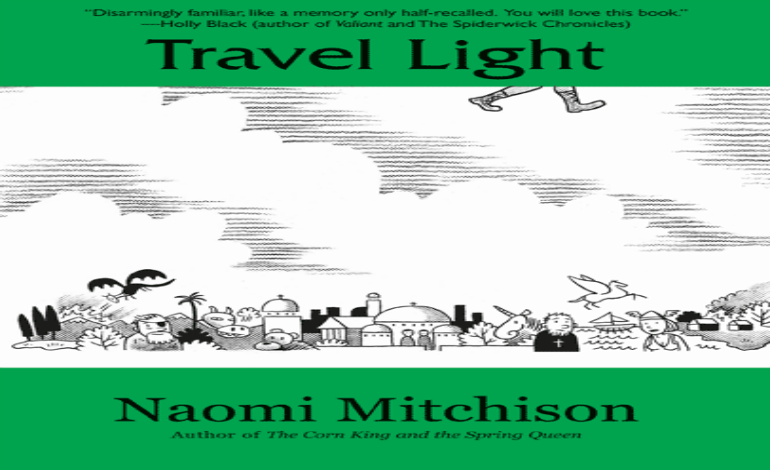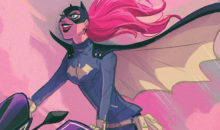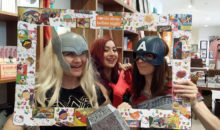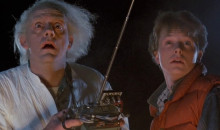When Reading High Fantasy, Travel Light
Back in the early twentieth century, two journeys began. They both began in England. One was the story of a Hobbit cleverly manipulated, though not necessarily against his will, into joining a company of Dwarves to confront a Dragon. The other story is one of a young girl, raised by bears and dragons, that sees heroes as her enemies, talks to a Valkyrie, and must travel the world to find and understand her place in it. One of these stories was made by a male Anglo-Saxon and Linguistics professor, poet and novelist, while the other was created by a female Liberal, Socialist, novelist, poet, and an early founder of some of the first birth control clinics in London. One of these stories survived and helped found a genre of high fantasy. The other story, however, was all but forgotten.
But fantasy author Amal El-Mohtar has not.
Naomi Mitchison wrote the 1952 novel Travel Light. While Mitchison is an interesting figure in and of herself, and she possesses many contemporary sensibilities about war, sex, and women’s rights, it is this particular novel of hers that fascinates me even more. Obviously, up until I read the above linked io9 article I neither heard of her nor this story. Travel Light is the story of a young girl named Halla, formerly the daughter of a king, who is rejected by her family and fostered by bears before, finally, being raised by dragons. It is after living amongst dragons and legendary monsters, and being taught to despise the heroes that hunt them, that she is approached by the All-Father Odin (The Wanderer), and is forced to make a choice: whether she wants to hold onto the parts of her life that define her, or to shed them and wander as well.
It is actually because of the io9 article and Amal El-Mohtar’s own beautiful article Crossroads And Coins: Naomi Mitchison’s ‘Travel Light’ that I read this book. It is an interesting story in a few ways. First of all, unlike Tolkien and his other contemporaries such as C.S. Lewis, Mitchison makes her mythological and historical references clear. Halla’s world is very overtly the world of Nordic and Mediterranean mythology. Also, there have been mentions of Greece, Constantinople, and Novgorod. Mitchison manages to subvert, perhaps tweak these beings ever so slightly and succeeds in making the reader look at them from another perspective. In fact, not only does she very smoothly subvert some tropes, she may well have made a few of her own. At the same time, she makes it so that Halla’s story seems to take place in our world, as much as fiction, fantasy or otherwise can allow, and that in itself speaks volumes.
As such, Mitchison also does not shy away from the very real dangers and moments of grief and vulnerability that Halla faces and comes to understand as a girl, a woman, and essentially as a human being. There is one quote that really gets to me after Halla faces a particularly horrible situation where it is stated “It was as though the murderers who had killed the old dragon had also killed a dragonishness in herself and she hated them all the more for it.” Mitchison makes sure that that while the dangers and consequences are not gratuitous in detail, she makes abundantly clear that they are serious and very real. At the same time, as all of these events happen to Halla, proving how strong and how vulnerable she really is, there is another element of Mitchison’s writing to consider.
While Halla is immune to fire, has knowledge of all languages that are animal or otherwise, and even comes to be given a piece of the Wanderer’s cloak, the most striking thing about her as a character is how many times she sheds her sense of identity, even as she collects epithets–surnames–to become and learn something new. It very much critiques and averts some parts of “the hero’s quest,” and heroes themselves, but at the same time Halla’s journey maintains its own rules. Simultaneously, when the story does come back full circle, it makes for a very awe-inspiring realization and where the narrative begins as a fairytale, and heroes and monsters fade into mutual legend, it all ends in mythology.
Travel Light is a story that works on so many different levels of physical detail and emotional depth: a tale with a sentence structure and language flow that you sometimes have to pay attention to, that doesn’t shirk away from background intrigue, or dare I say Byzantine scheming, but at the same time provides dimensions to characters and an interesting notion of spirituality. I have this temptation to state, in a similar way to Amal El-Mohtar, that Mitchison’s novel makes an excellent story for young girls trying to find someone they can identify with in literature and fantasy. Unlike Tolkien’s heroines Eowyn, Arwen, or even Galadriel in Middle-earth Halla is the protagonist of her own world and her journey.
But what I really want to say is that Travel Light works on many different layers, as most great stories do, and Mitchison says something to everyone. I do think that young girls should read this story, but I also think that boys and adult audiences would also definitely appreciate the depth and resonance that it provides. In fact, I would definitely classify this novel as an obscure classic, as a narrative that can be read by someone as a child and read again as an adult with a different kind understanding but still somehow managing to retain a sense of timelessness.
In the end, Travel Light is a work that deserves to be on a shelf next to Tolkien’s The Hobbit, C.S. Lewis’ The Chronicles of Narnia, Ursula K. LeGuin’s A Wizard of Earthsea, and all the great timeless stories of fantasy: that is, when a parent is not reading it to their child, or when their child is not reading it for themselves and imagining themselves stripping away all their preconceptions of reality … and traveling light.







